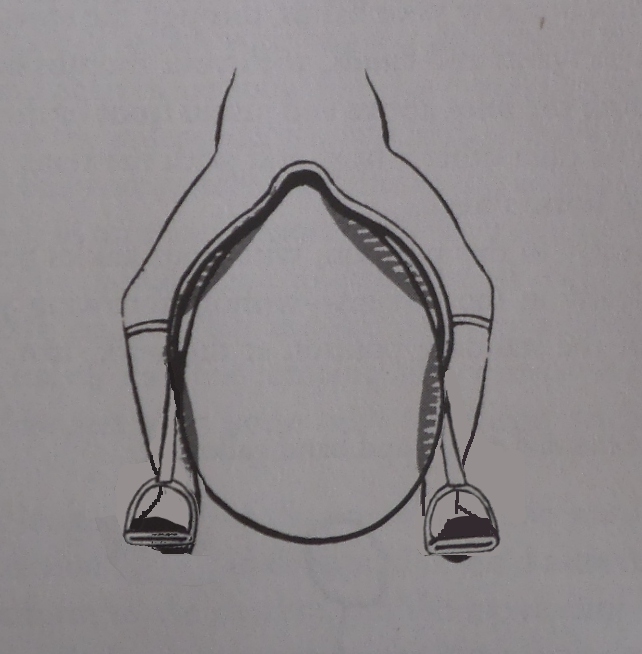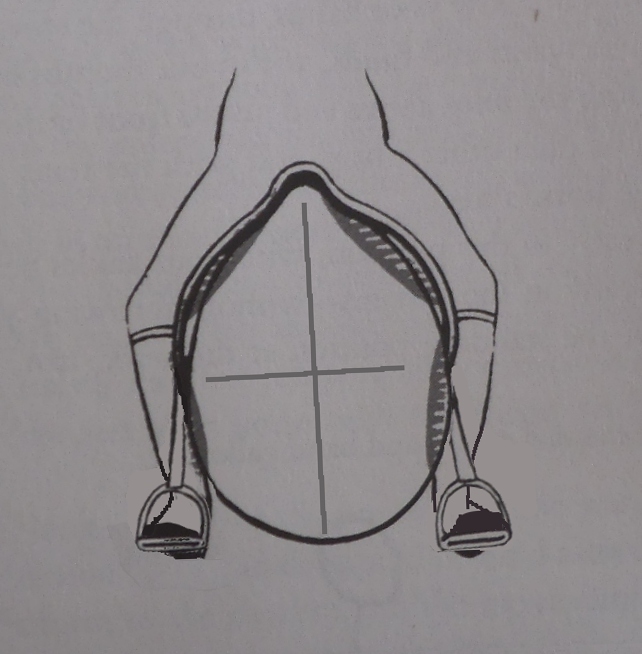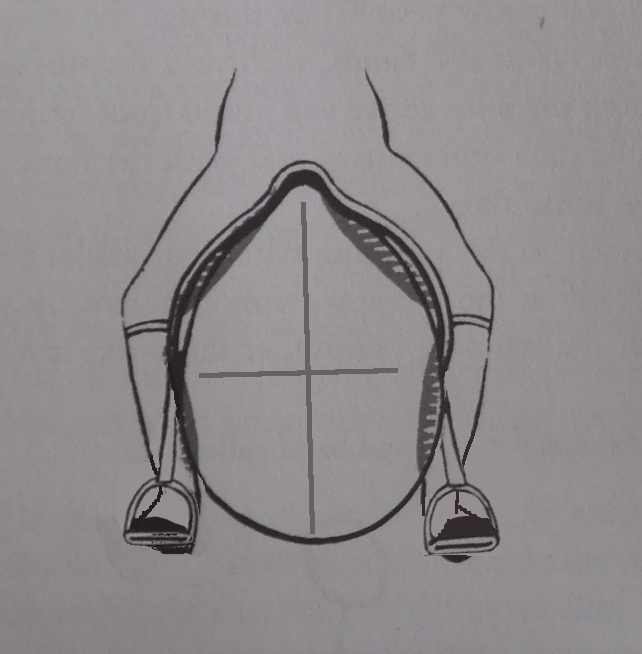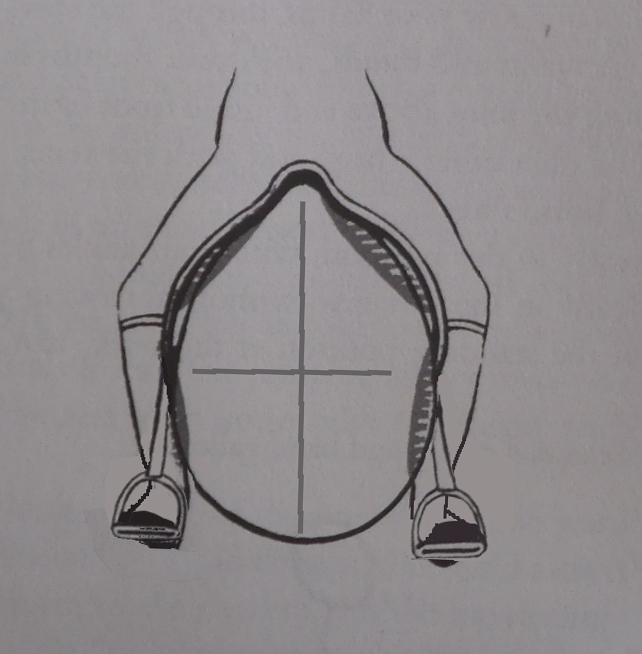They are connected
Let
the Horse do the Work!
Here we have a photo of the traditional leg position:
thighs and calves firmly on the horse and heels down.
It's from a book I love! Effective
Horsemanship by Noel Jackson It's also not what
I do. It's what I've not done for as long as I've
been doing Centered Riding! But it's still a cool
picture and it'll help.
The first major modification is to leave the bottom
of the feet level with the ground.
Real quick, if you push against a wall, what happens
to the wall? What happens to you? In this case,
the irons are the wall. The more you push down on the
irons, the more you push yourself away from the
irons. Which is to say, the more you push yourself
away from the horse's back. Since the aim is to stay
*on* the horse's back, dispense with pushing against the
irons!

Now, a released leg will have a heel that drops down
naturally and is able to absorb movement. This comes
about by getting rid of any unnecessary tensions in the
leg. (Which is where I come in handy!) So a
heel below the iron is ok as long as it is floating and not
forced.
The next aspect of this is that a lot of time is
spent talking about how the leg moves. Which, the leg
moves, but we don't move the leg, and that's where it gets
dicey.
If you have a towel draped across the horse's back,
as the horse walks, the edges of the towel will lift and
drop -- because the horse's back lifts and drops. But
the towel itself doesn't get longer and shorter.
Similarly, with the legs, as a unit, they rotate around the
longitudinal axis of the horse without needing to
noticeable change their shape. If the rider's leg is
released, the rider needn't push into a stirrup or lift a
foot, bend a knee or articulate a hip. Or anything
really. The horse does all the work. It looks a
little like this,
on a continuous loop:
One of my first images for this was from childhood
playing with the plastic cowboys that snapped onto the
horses -- the cowboys were permanently bow legged, and
there is a similar quality when riding. The legs stay
relatively the same length and shape, although they aren't
solid like the plastic cowboy. Because there are
released joints, the joints are articulated by the movement
of the horse.
The thing is, it's not like
when the stirrup comes up, a foot lifts, a knee bends, a
hip articulates and that side is scrunched up while on the
other side the leg is still scrunched up waiting for the
energy to pass over the back and unscrunch it. There is
a transfer of kinetic energy within the leg, like sand or
water moving within the container of the skin.
Another way to think of this is that the feet are on
a teeter-totter. When one end of the teeter totter
goes down, the other end goes up. And vice
versa. There are two ways to think of this -- the end
that goes up pushes the other side down, or, the side that
goes down, pulls the other side up. I have found that
if I allow the falling foot to pull up the other foot, it
is much easier to keep tension out of the body.
Or, you can think of there being a long continuous
string connecting the feet. When one foot moves, the
other foot automatically moves, too. They move in
unison at the same time -- just doing mirror things.
There is also another teeter totter which can be used --
under the sit bones, where the horse's back is
moving. If you think of the legs like strings with
balls at the end (where the feet are), then when the side
of the horse lifts, it lifts that leg, and when the side
drops, it drops that leg. As one leg lifts, the other
drops. The deeper in the earth you can connect, the
freer the movement of the horse and of your legs.
  
What's the benefit of this?
You don't have to keep track of how to move your legs!
Releasing tension from the body allows us to move in
harmony with the horse. Wherever we're tight, we
bounce against the horse and have to grip. By
allowing the joints to articulate while letting the horse
move them, we don't have to guess how much to move.
  
An Approach
If you're interested, another option is some hands on guidance and
feedback! Call and leave a message or email or pm and and set up a
lesson! This is what I teach. Let me share with
you how
to use these concepts for greater understanding and
harmony with your horse. The fabulous rides follow.
Lynn
Centered Riding Instructor & Level
III Clinician
|




![Centered Riding Today: An Informal Talk by Sally Swift [VHS]](http://ecx.images-amazon.com/images/I/41Vn6PfhzML._SL125_.jpg)
![Centered Riding with Sally Swift [VHS]](http://ecx.images-amazon.com/images/I/51OSh9kd9iL._SL125_.jpg)







